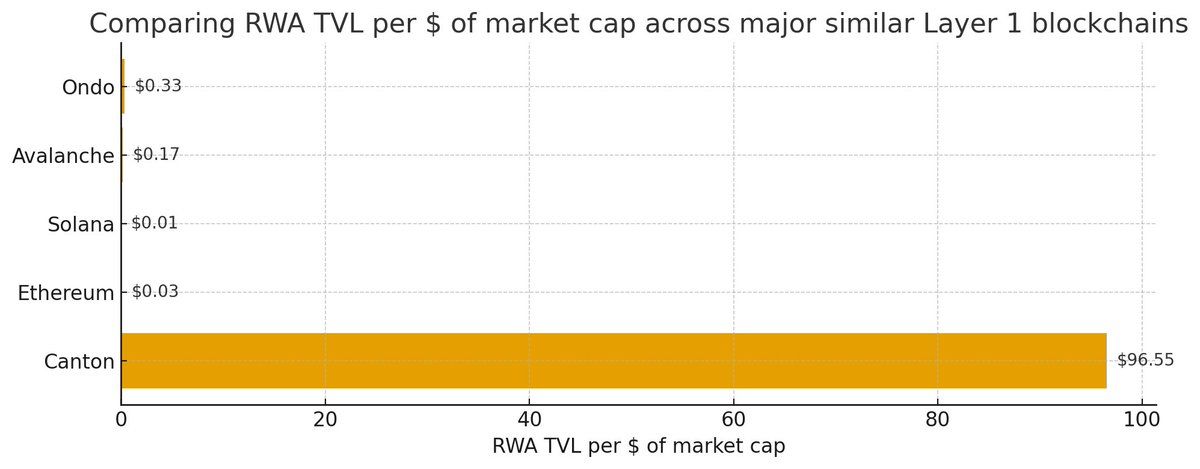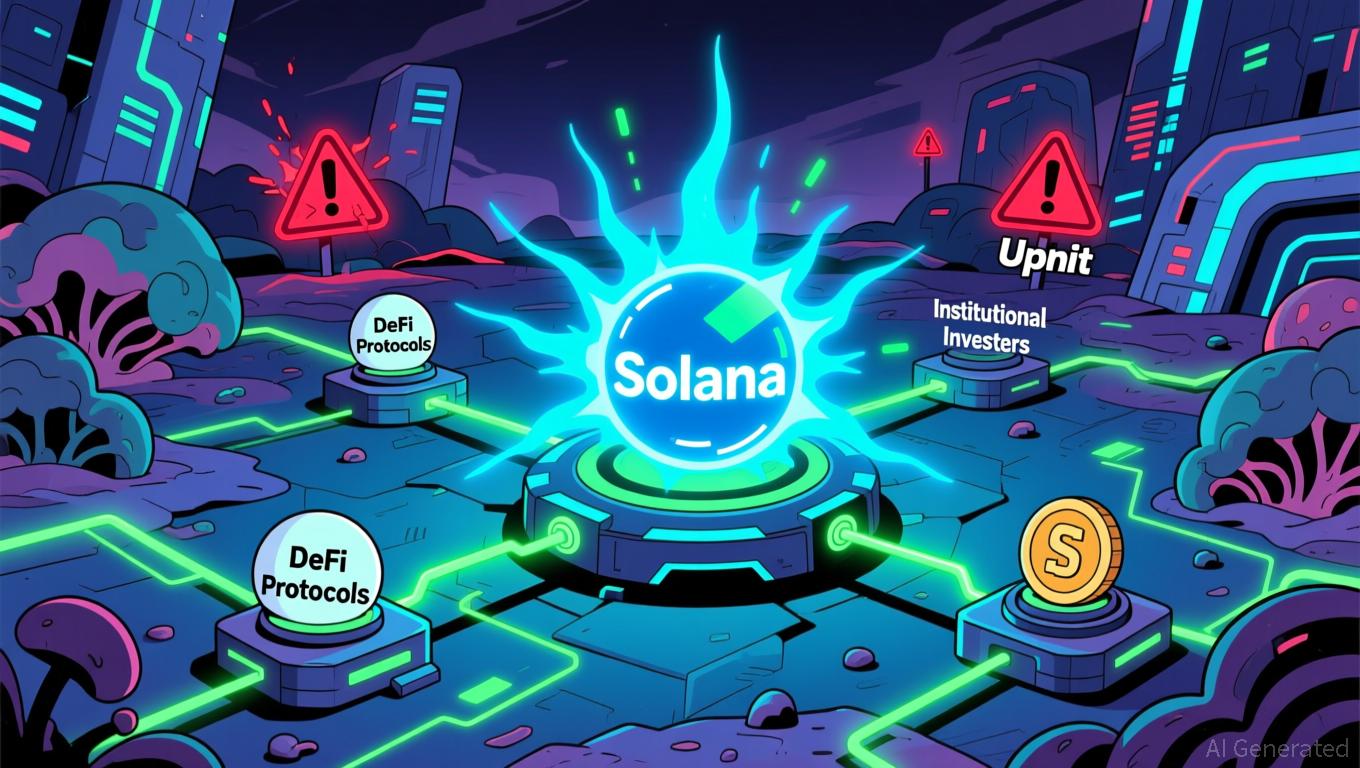Institutions Turn to Purpose-Built Blockchains as Privacy Concerns Drive Shift Away from Ethereum
Financial institutions are shifting away from Ethereum (ETH) and opting for purpose-built blockchains tailored to meet their institutional needs. Recent developments, such as Klarna’s launch of its stablecoin on an alternative network and the rise of privacy-focused chains like Canton, raise questions about the network’s dominance. Corporate Blockchain Adoption Signals New Threat to Ethereum: Here’s
Financial institutions are shifting away from Ethereum (ETH) and opting for purpose-built blockchains tailored to meet their institutional needs.
Recent developments, such as Klarna’s launch of its stablecoin on an alternative network and the rise of privacy-focused chains like Canton, raise questions about the network’s dominance.
Corporate Blockchain Adoption Signals New Threat to Ethereum: Here’s Why
Klarna announced KlarnaUSD, becoming the first bank to issue a stablecoin on Tempo, a payments blockchain from Stripe and Paradigm. This decision has sparked debate in the crypto community. Some view it as a bearish signal for Ethereum.
“Someone tell me why this isn’t bearish for Ethereum? A major fintech with a big move into stablecoins is not launching it on Ethereum. If Tempo didn’t exist then this would have likely launched on Ethereum or an ETH L2…Tempo taking marketshare in what is the main thesis for Ethereum: stablecoins,” an analyst stated.
Ethereum hosts major stablecoins, including Tether (USDT) and USDC (USDC), which together command over $100 billion in market capitalization. They drive significant network activity and fees. By opting for Tempo, Klarna bypasses Ethereum’s ecosystem, potentially diverting liquidity and innovation.
Another analyst, Zach Rynes, emphasized that Klarna’s decision demonstrates that corporate blockchains are gaining adoption, while public chains continue to be overshadowed by large fintech companies.
“Another confirmation that corpo L1 chains are here to stay and that your favorite commoditized ‘neutral’ public chain #375936 is getting steamrolled by Fintech yet again,” he said.
The rise of the Canton Network further exemplifies this. It is a Layer 1 network built with privacy controls at its core. Institutions can choose how visible or restricted their activity is, enabling setups that range from fully permissionless to completely private systems.
Despite these differences, applications on Canton can still connect and interact across the network. Goldman Sachs’ Digital Asset Platform (GS DAP) uses the Canton network natively.
Notably, Canton exhibits a significant level of capital efficiency, producing around $96 of RWA Total Value Locked (TVL) for every $1 of market capitalization. In contrast, Ethereum generates approximately $0.03 of RWA TVL for every $1 of market cap.
 A Comparison of RWA TVL Per Dollar of Market Cap. Source:
X/MattMena__
A Comparison of RWA TVL Per Dollar of Market Cap. Source:
X/MattMena__
But why are institutions moving away from Ethereum? Privacy could be the primary driver of this exodus. Public blockchains like Ethereum make all transactions permanently visible, a core challenge for institutions.
When banks or corporations transfer large sums, this transparency poses a significant risk. Competitors can analyze patterns, front-run trades, and uncover strategic business ties.
According to COTI Network’s analysis, enterprises adopting Web3 often overlook blockchain transparency as a liability. The article notes that public blockchains expose all transactions and metadata, which can reveal sensitive data or undermine negotiation leverage. This creates regulatory concerns with laws such as GDPR and exposes trade secrets.
This disconnect explains why institutions are building private blockchains or seeking public networks with enhanced privacy. Transparency, a celebrated virtue in crypto, creates vulnerabilities when handling billion-dollar trades and confidential relationships.
This trend signals a split: public networks like Ethereum for decentralized or retail use, while institutions move to private or specialized chains with confidentiality. Whether Ethereum can win back institutional trust or specialized networks take over remains uncertain as finance undergoes a digital transformation.
Disclaimer: The content of this article solely reflects the author's opinion and does not represent the platform in any capacity. This article is not intended to serve as a reference for making investment decisions.
You may also like
Privacy Altcoins Surge While Crypto Markets Decline
In Brief Cryptocurrency markets faced a major downturn in recent weeks. Privacy altcoins like Zcash rise amidst stricter regulation concerns. Upcoming regulations pose liquidity risks for privacy-focused cryptocurrencies.

Solana News Today: Institutions Remain Confident in Solana Amid Security Concerns and Volatile Prices
- Solana's on-chain trading volume now exceeds centralized exchanges, driven by $510M in ETF inflows and institutional adoption of DeFi protocols. - Price volatility and security breaches, including Upbit's $36.8M Solana-based theft, highlight risks despite $3B+ in corporate treasury holdings. - Institutional capital continues to flow into Solana's ecosystem, with DWF Labs committing $75M to scalable DeFi infrastructure amid TVL recovery to $120B. - Forward Industries reports $668M unrealized losses as Sol

XRP News Today: XRP ETFs See Rapid Growth, Price Remains Flat—Will Increased Inflows Overcome Technical Barriers?
- XRP ETFs saw $164M inflows on Nov. 24, 2025, with Grayscale and Franklin Templeton launching new products amid rising institutional interest. - Price rebounded to $2.20 but remains range-bound below key technical levels, forming descending patterns despite ETF-driven liquidity gains. - Ripple's RLUSD stablecoin surged 56% in 30-day volume to $3.5B, now third-largest GENIUS Act-compliant stablecoin after USDC and PYUSD. - Analysts predict $5.05 by 2025 and $26.50 by 2030, but XRP's 16.95% drop from 30-day

SEC Considers Blockchain Stock Advancements as Concerns Over Conventional Market Stability Persist
- SEC plans to discuss tokenized stock regulations with major firms like Coinbase and BlackRock , aiming to modernize securities rules for blockchain-based finance. - Proposed "innovation exemption" seeks to fast-track crypto products but risks destabilizing traditional markets by creating valuation gaps and eroding investor protections. - WFE warns tokenized shares could disrupt market structure, while Nasdaq proposes unified order books with shared CUSIP identifiers to align with existing systems. - Regu

